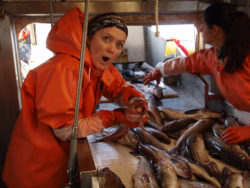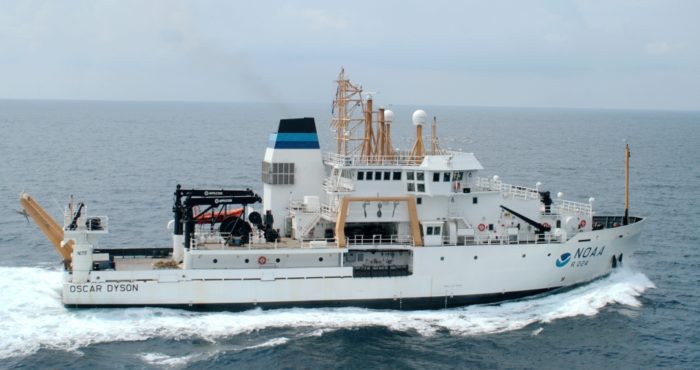Starfish Adaptations: Peer-Taught

In 2011, Cathrine Prenot Fox sailed on a Midwater Assessment and Conservation Engineering Program (MACE) research cruise, which was conducting an acoustic survey of pollock in the Gulf of Alaska. Learn more about Cathrine’s experience aboard the NOAA Ship Oscar Dyson by reading her NOAA Teacher at Sea blogs.
Grade Level: 2nd grade, taught by high school biology students
Subjects (Focus/Topic): Life Science, Biology – marine organisms, animal adaptations, structure/function, habitat, natural selection
Average Learning Time: two 45-minute periods
Description: Students explore an unknown organism to understand that every living creature has traits that impact their use of habitat. The structure and function of traits are important in an individual’s survival and the survival of populations. Students will observe, explore, dissect and compare members of the animal phylum Echinodermata to understand what particular traits make them successful in their environment.

